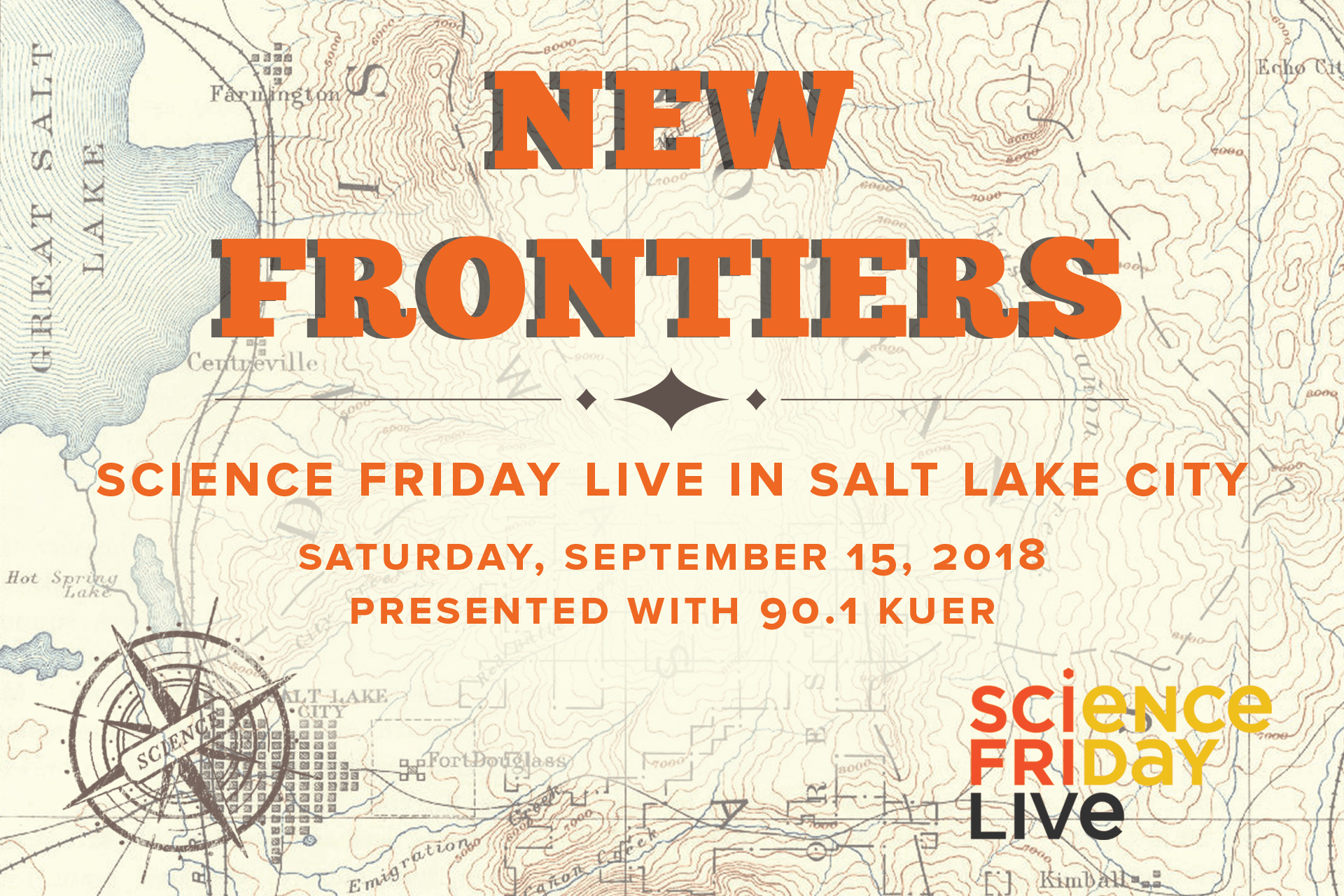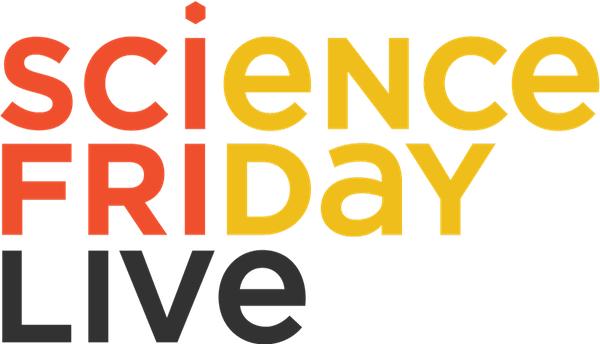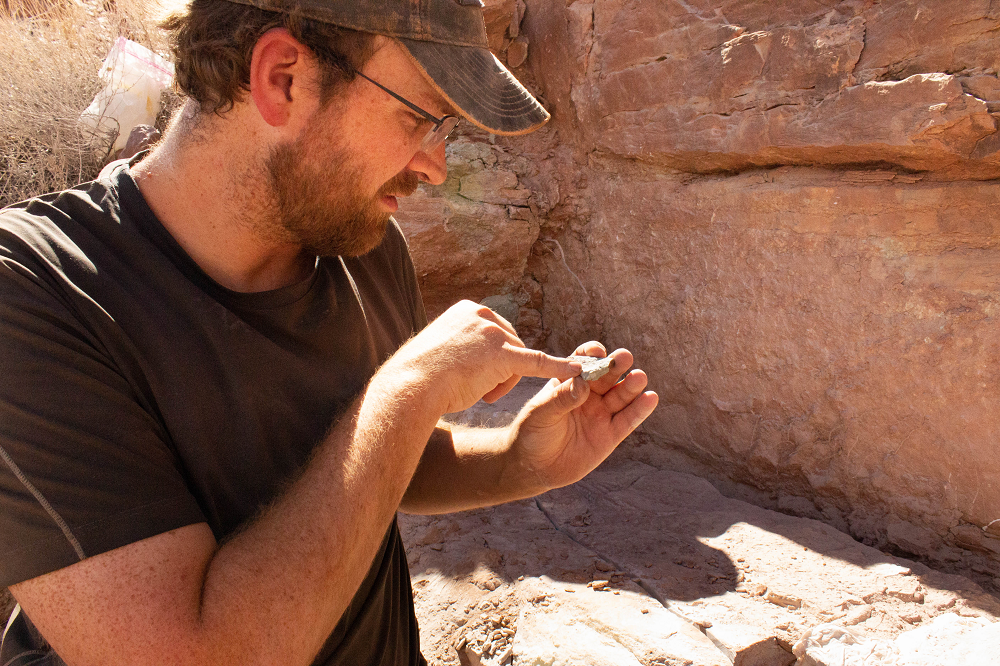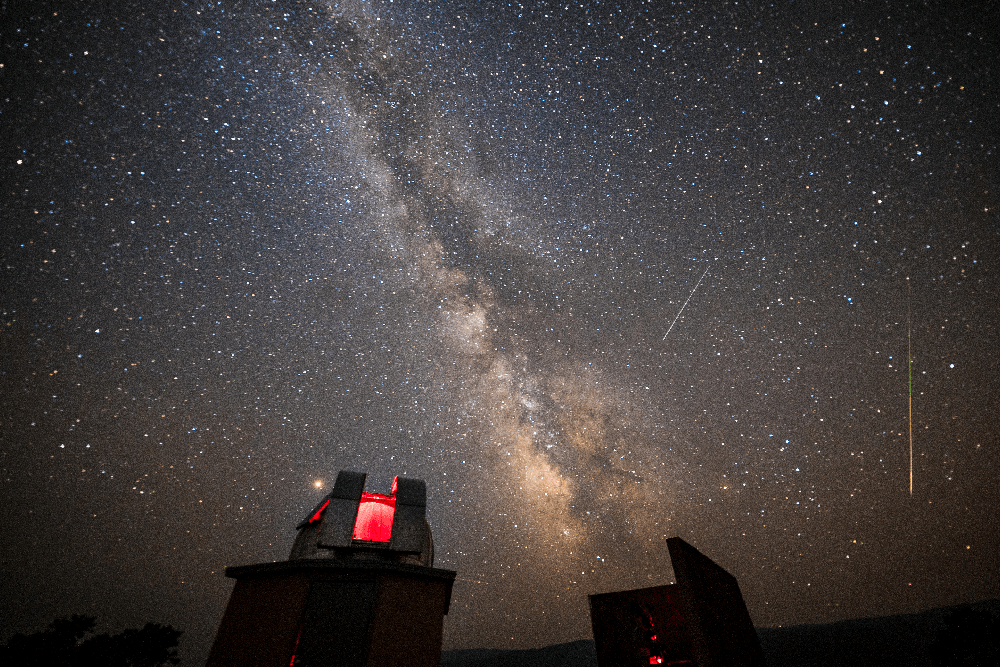Science Friday Live In Salt Lake City
On Saturday, September 15, Science Friday heads to Salt Lake City to learn about local science.

 When: Saturday, September 15, 2018 7:30PM
When: Saturday, September 15, 2018 7:30PM
Where: Delta Hall at the Eccles, Main St, Salt Lake City, UT 84111
Tickets: Buy tickets here!
Join Ira Flatow and the rest of the SciFri crew as we hit the road to uncover and report on the amazing science news and stories happening in your local area. This is your chance to look behind the curtain of your favorite national radio show and participate in a special live performance with the Utah scientists and conversations you love. This 90-minute program typically features live music, props, video screenings, and demonstrations. And as a bonus, the event will be recorded so you can be a part of the weekly Science Friday broadcast heard on your local station!
For this show, we will set out to explore new frontiers in Utah science!
In the northern reaches of Utah’s Great Salt Lake sits Gunnison Island, a narrow strip of land just a mile long and half a mile wide. Despite its small size, the island hosts the world’s second largest white pelican rookery, with an average of 20,000 birds and 6,000 nests. Unlike the brown pelicans seen along the nation’s coasts, white pelicans don’t dive for fish. Instead, they herd them with their feet and their bills, then swoop in for the attack. Biologist Jaimi Butler of Westminster College’s Great Salt Lake Institute calls the birds the ‘polar bears’ of Great Salt Lake—because as lake waters drop, the birds’ island refuge is now threatened by humans, coyotes, and other predators. She and her team have installed cameras on the island, so-called “PELIcams,” to spy on the birds and their predators, and they’ll soon invite citizen scientists everywhere to help out with a project at Zooniverse.
Forest ecologist Nalini Nadkarni pioneered the exploration of tree canopies—the “new frontiers” of the forest. There, high in the trees, she found soil coating the branches, much like the soil on the forest floor—and unique adaptations, like the water-gathering abilities of bromeliads. She also studies Ira’s favorite plants, the canopy-dwelling orchids. We’ll also talk with Nadkarni about her projects to communicate science to underserved populations, like inmates in prisons around the nation—from maximum security to Supermax to solitary confinement. Take a sneak peak of her work in a video by KUER’s RadioWest.

If you stood in southeastern Utah about 300 million years ago, you’d be overlooking the ocean. The landlocked state wasn’t quite the same landscape of scarlet plateaus and canyons you might see today, but a coastal desert where sand dunes butt up right against the sea. And 80 million years later, it was home to some of the earliest dinosaurs. In this region of Utah, today known as Indian Creek in Bears Ears National Monument, the remains of dinosaur relatives, known as protodinosaurs or “dinosaur aunts and uncles,” are buried in the earth—their bones telling stories about the dawn of dinosaurs, prehistoric Utah, and a much warmer Earth.
The creatures that came before the massive, iconic dinosaurs of the Jurassic period are often times overlooked. But the fossils of early dinosaurs and animals provide just as crucial information for filling in Earth’s early timeline. There is a bounty of amazing fossil diversity dispersed across the Indian Creek sites, from the crocodilian-like phytosaur to the big armored herbivore aetosaur to the sailed-back dimetrodon.
Join Science Friday and Randall Irmis, curator of paleontology at the Natural History Museum of Utah on an adventure out in the field, and witness what it’s like to step into a paleontologist’s boots and experience the excitement of discovering some dino gold.

What’s the darkest night sky you’ve ever seen? Mark Bailey has probably seen darker. As a photographer and amateur astronomer, Bailey has spent many a night in rural Southern Utah at 7,000 feet on the high Colorado Plateau, a place so dark the Milky Way actually casts a shadow on the buff sandstone and red rock. Bailey is a member of a growing community of advocates invested in protecting “dark skies” from the light of Utah’s urban corridor, where 80 percent of the state’s population lives. See what happens when Science Friday and KUER’s RadioWest team travel out to Bailey’s observatory to spend some time in the dark.
Plus new research shows there are serious health consequences to living in a light polluted landscape: Increased risk of depression, anxiety, sleep disorders, breast cancer and more. Jess Dwyer, biologist, educator, and founder of Dark Sky SLC, discusses the negative effects of artificial light at night on urban dwellers.
Recommended for ages 8 and up. No babes-in-arms. All patrons must have a ticket regardless of age.